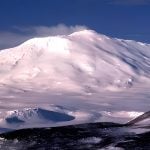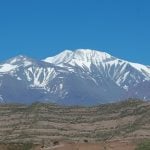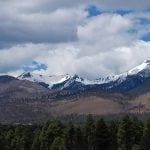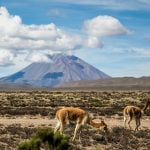Argentina’s Top 10 Highest Mountains: Peaks of South America
Argentina is home to some of the highest and most impressive mountains in South America. The Andes mountain range stretches across the western part of Argentina, with Aconcagua being the highest peak in both Argentina and South America, rising to 6,961 meters. It is the tallest mountain in the Americas and one of the most sought-after peaks for mountaineers due to its challenging altitude and extreme conditions. The ascent involves navigating through rocky terrain, glaciers, and snow-covered ridgelines, making it a physically demanding climb. Argentina’s highest peaks offer not only a tough challenge for climbers but also an unforgettable experience for nature lovers and photographers, providing breathtaking views of the country’s natural beauty and mountain heritage. Argentina’s Top 10 Highest Mountains: Peaks of South America
1. Mount Aconcagua (6,961 m) – The Highest Peak in the Americas
Mount Aconcagua is the highest peak in South America and the Western Hemisphere, standing at 6,961 meters. Located in the Andes mountain range, it poses a challenging climb due to its high altitude and harsh weather conditions. The standard ascent route is via the Northwest Face, a non-technical, but physically demanding path. Climbers face strong winds, low temperatures, and potential avalanches. The mountain does not require advanced technical skills, but climbers must have solid high-altitude experience and acclimatization to mitigate the risks of altitude sickness.
2. Mount Ojos del Salado (6,893 m) – The World’s Highest Active Volcano
Mount Ojos del Salado is the world’s highest active volcano, situated on the border between Argentina and Chile. Standing at 6,893 meters, its summit is often shrouded in snow and ice. The climb to the summit involves navigating rocky terrains, glaciers, and challenging volcanic rock slopes. The lack of oxygen at such high altitudes demands proper acclimatization. The summit also hosts the highest permanent body of water, a crater lake, adding an additional geological marvel to its ascent.
Ojos del Salado: The Second Tallest Mountain in South America
3. Monte Pissis (6,793 m) – A Remote Andean Giant
Monte Pissis, with an elevation of 6,793 meters, is located in the Atacama Desert and is considered one of the most remote peaks in the world. The climb involves traversing volcanic terrain, loose rocks, and steep snowfields. Climbers must prepare for extreme cold, high winds, and the lack of water sources along the ascent. This mountain’s remoteness makes logistics challenging, and trekkers must be self-sufficient in food, fuel, and emergency equipment.
4. Mount Cerro Tres Cruces (6,748 m) – An Isolated Ascent
Mount Cerro Tres Cruces stands at 6,748 meters and is one of the lesser-known peaks in the Andes. Its summit is accessible through rocky, glaciated routes, making it more technically demanding than other peaks on this list. Climbers face steep ascents, unpredictable weather, and the risk of crevasse falls. While not heavily climbed, its location in the remote regions of the Atacama Desert offers stunning views and unique geological features. The mountain demands experience in high-altitude trekking and glacier navigation.
Mount Tres Cruces Sur : A Natural Wonder at the Peak of the Andes
5. Mount Cerro Bonete (6,759 m) – A Glacier-Capped Peak
Mount Cerro Bonete, at 6,759 meters, is a massive peak in Argentina’s Andean Mountains. The climb involves navigating glaciers and steep ice sections, requiring advanced ice climbing skills. High winds, low temperatures, and high-altitude conditions make this peak a challenging ascent. The glacier approaches require technical mountaineering, including crevasse crossing, and careful route planning to minimize risk. Climbers must be well-prepared for extreme conditions and long durations of exposure at high altitudes.
6. Mount San Francisco (6,020 m) – Argentina’s Striking Volcanic Peak
Mount San Francisco, standing at 6,020 meters, is an extinct volcanic peak located in the Andes. The climb is relatively non-technical but involves rocky terrain and significant altitude acclimatization. The summit offers panoramic views of surrounding volcanic landscapes and the nearby Paso de San Francisco, a high-altitude pass. While not particularly difficult in terms of technical climbing, the ascent is physically demanding due to the thin air and long duration.
7. Mount Cerro Vicuña (6,178 m) – A Challenging Volcanic Ascent
Mount Cerro Vicuña is a striking volcanic peak that reaches an elevation of 6,178 meters. The climb requires navigating rocky slopes and volcanic ash, with high risks of avalanches and unstable ground. The route is technical, demanding skills in both rock climbing and glacier travel. The harsh conditions, including high winds and low temperatures, require precise planning for safe ascension. The remoteness of the area also poses logistical challenges for climbers attempting the summit.
8. Mount Nevado Tres Cruces (6,100 m) – High Altitude Glacier Climb
Mount Nevado Tres Cruces, located in the Andes, reaches a height of 6,100 meters and involves a challenging climb through glaciers and ice-covered terrain. The ascent is technically demanding, requiring glacial navigation and knowledge of mountaineering techniques. Climbers face difficulties with crevasses, steep snow slopes, and weather conditions that can change rapidly. The peak is an excellent choice for advanced mountaineers seeking to experience Argentina’s mountainous wilderness.
9. Mount Cerro El Toro (6,023 m) – Technical Glacial Ascent
Mount Cerro El Toro is located in the central Andes and stands at 6,023 meters. The climb is demanding and involves steep ice climbing, glacier navigation, and traversing snow-covered ridges. Climbers will encounter several technical obstacles, including crevasses, loose rock, and steep ice faces. The altitude can cause challenges with acclimatization, making it important to spend several days at higher altitudes to avoid altitude sickness.
10. Mount Cerro Mercedario (6,770 m) – A Volcanic Challenge
Mount Cerro Mercedario, standing at 6,770 meters, is located in the Central Andes. It’s one of the most challenging mountains in the region, offering a technical ascent that requires glacial climbing and experience in rock scrambling. The terrain includes volcanic rock, steep ice slopes, and barren landscapes. While the summit does not involve a technical climb to the same extent as some other peaks, the overall conditions and high altitude make it a physically demanding climb.
The World’s 100 Highest Mountains by Country and Continent





